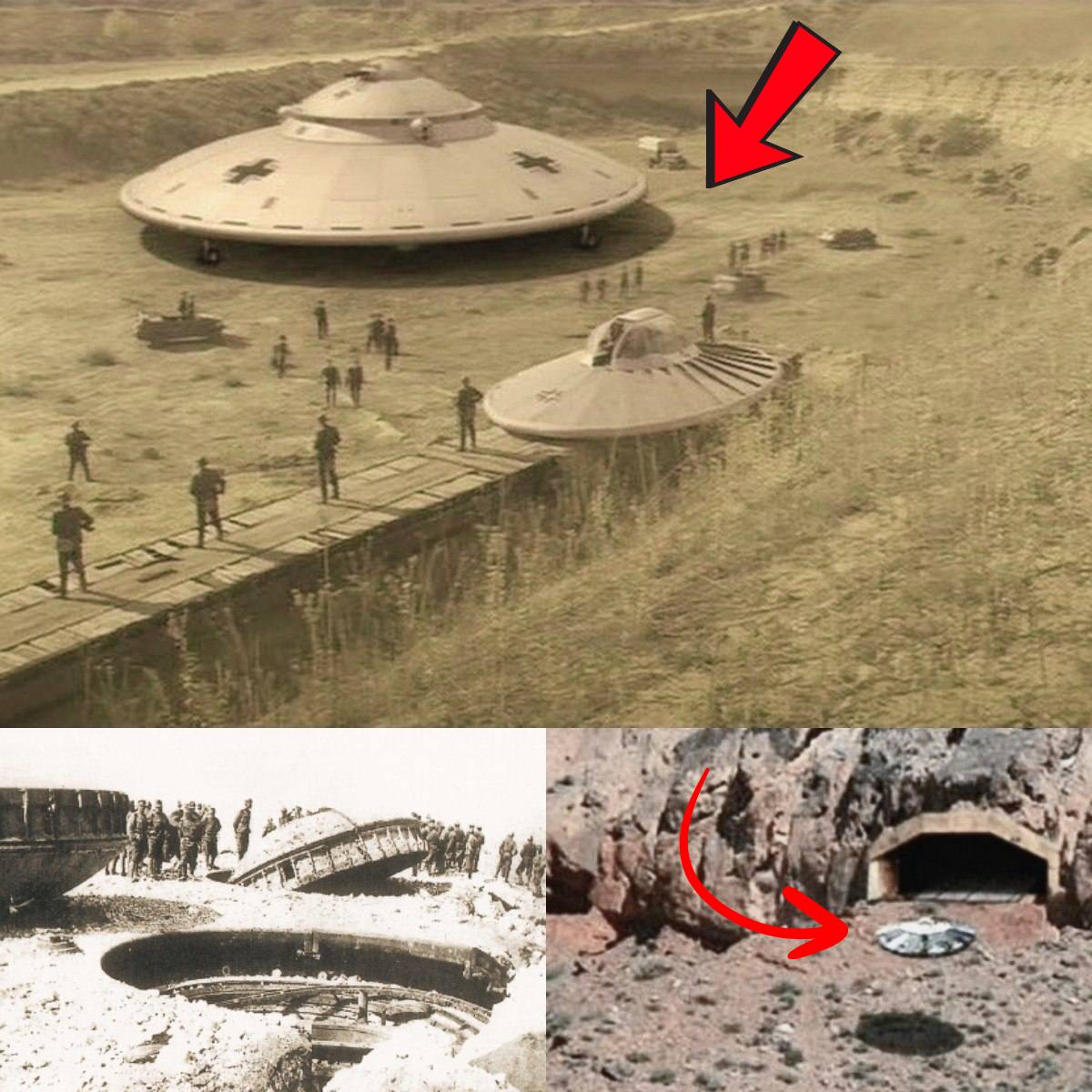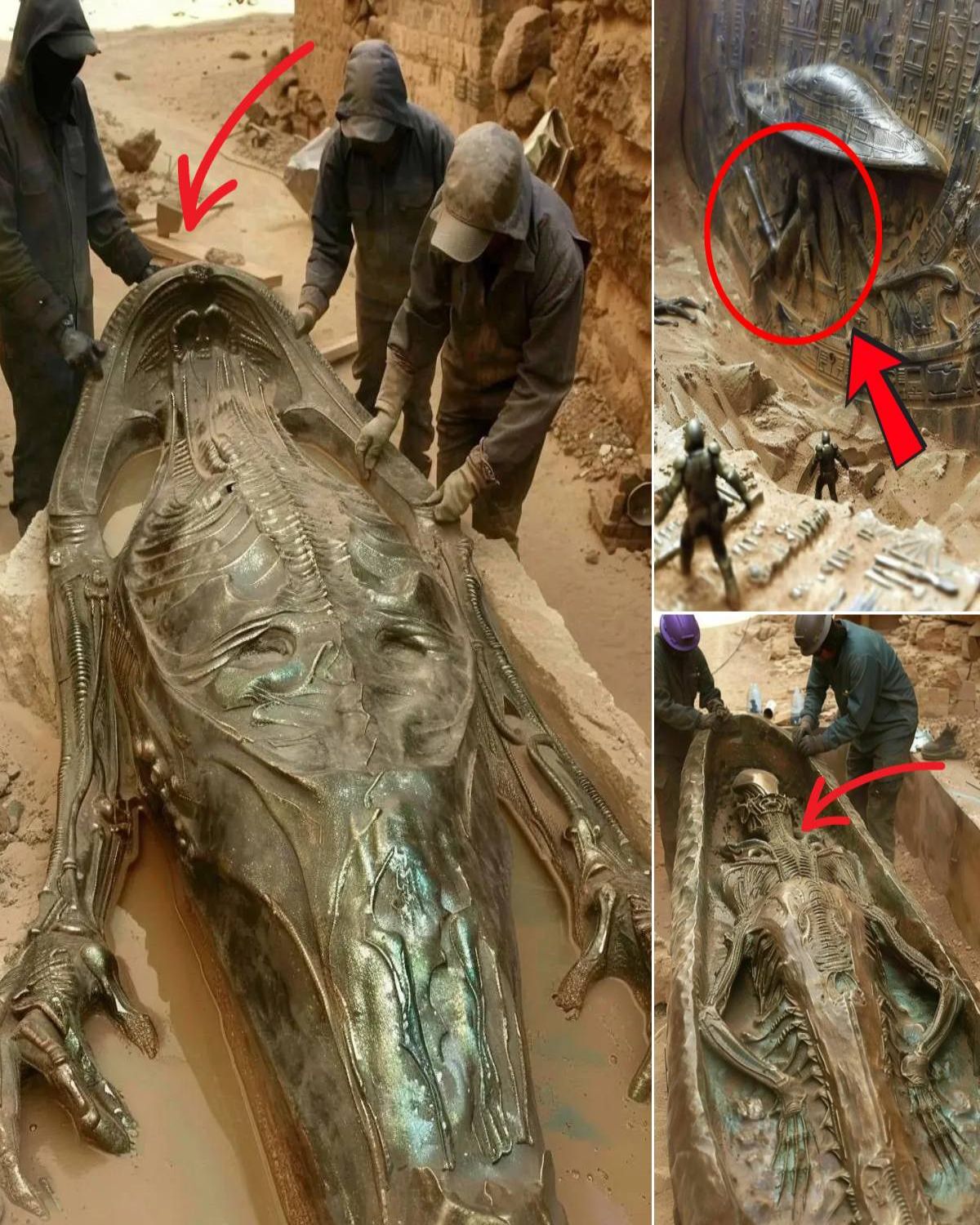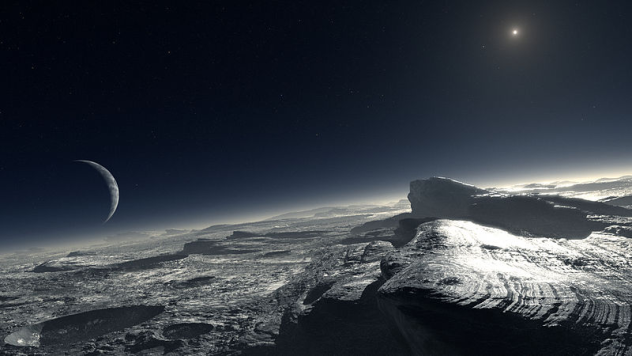
In a few days, a £1.4bn probe will be blasted into space on an eight-year mission to find signs of life on other worlds in our solar system. The spacecraft will not head to local destinations such as the planet Mars, however. Instead, it will fly into deep space and survey the icy moons of distant Jupiter. In doing so, it will open up a new chapter in the hunt for extraterrestrial life.
The Jupiter Icy Moons Explorer – or Juice – will exploit an unexpected feature of our solar system. The greatest reserves of water turn out to exist on worlds very far from Earth, in deep space, and in orbit around the giant planets Jupiter and Saturn. Juice is the first mission to be launched specifically to explore these remote worlds.
“We would like to see whether there are places around Jupiter where life could have started. We need to find a place with internal energy and liquid water,” said Olivier Witasse, the mission’s project scientist. “With the icy moons of Jupiter, we have good reasons to believe that there is more water than on Earth.”
The idea that our best hopes of finding alien life lie with explorations of ice-coated moons in deep space would have seemed ridiculous a few decades ago. Venus and Mars offered our best hopes, it was then assumed. But cloud-shrouded robot spacecraft revealed that Venus had a surface temperature of 475C, hot enough to melt lead, while Mars was found to have lost its atmosphere and surface water billions of years ago. Efforts to find surviving underground supplies have so far been unsuccessful.
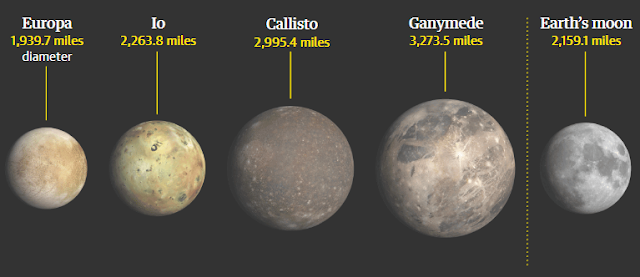
At the same time, other US probes discovered that three of Jupiter’s main moons – Ganymede, Callisto and Europa – were worlds of ice that covered vast oceans of liquid water, the one prerequisite needed for the existence of life on Earth.
It was also discovered in 2005 that Saturn’s tiny moon, Enceladus, is spraying water and organic material into space from an underground ocean.
“If ever there was a next-best place to look for life, it’s here,” says the US astronomer Neil deGrasse Tyson on the subject of these icy moons.
Getting there is a different matter, however. Journeys to Mars take about eight months. By contrast, Juice – which is scheduled for launch from the European Space Agency (Esa) spaceport in Kourou in French Guiana on Wednesday – will take about eight years to reach Jupiter, a journey that will require a series of flybys of Earth and Venus to keep it up to speed.
Juice will enter orbit around Jupiter in July 2031, by which time it will have been overtaken by another probe, Nasa’s Europa Clipper, which is taking a shorter route, using flybys of Earth and Mars, to arrive in April 2030.
As its name suggests, the US spacecraft will focus on Europa and is scheduled to make 50 close approaches of the moon, sweeping a few hundred miles over its surface to try to spot areas that could support life.
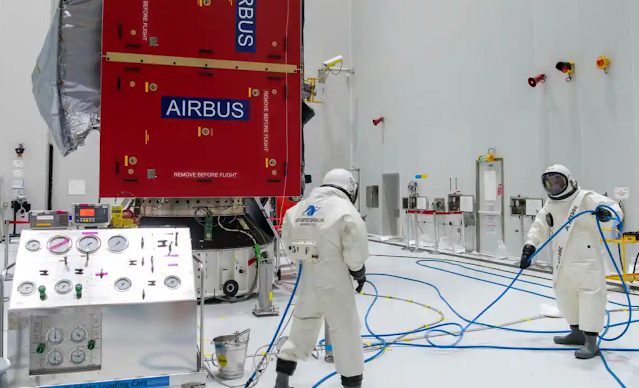
The Jupiter Icy Moons Explorer being fuelled for launch before its eight-year journey to explore Jupiter’s ocean-bearing moons. Photograph: ESA/CNES/Arianespace/PA
“Europa’s ocean is likely in contact with a rocky seafloor,” said Marshall Styczinski, a Europa Clipper scientist. “That means we expect chemical reactions that would create hydrothermal vents, like in Earth’s oceans. Hydrothermal vents support thriving ecosystems on Earth, so they might be doing the same on Europa.”
By contrast, Juice will concentrate on a different target – Ganymede, the largest moon in the solar system. Bigger than the planet Mercury, Ganymede is also the only moon in the solar system with its own magnetic field.
After a series of visits to Callisto and Europa, Juice will enter into a permanent orbit around Ganymede in 2034. It will be the first time a spacecraft has ever held an orbit around a moon other than our own.
And this highlights a crucial difference between the two missions. Ganymede’s orbit is further from Jupiter than Europa’s and so is affected less by the planet’s powerful magnetic field. Juice can survive in orbit round Ganymede, Esa has calculated.
But this is not the case for Europa where the radiation environment will be much more of a threat to the spacecraft’s electronics. Instead, the Clipper will have to sweep over the moon in a series of darting flybys over the length of the three-and-a-half-year mission.
The two missions are being run by separate space agencies, although Nasa and Esa insist there will be close collaboration and have set up a committee to coordinate joint missions that the two spacecraft might attempt.
Results could be revolutionary. If we find that life has evolved twice, separately, in our own solar system, that would indicate it is likely to be widespread throughout the galaxy.
Juice’s blast-off will be watched with bated breath by the scores of European scientists who have collaborated on the project and who will watch as it is carried aloft on an Ariane 5 launcher, the same rocket that placed the James Webb space telescope on a perfect trajectory on Christmas Day 2021. They will be hoping for a repeat performance.
